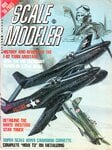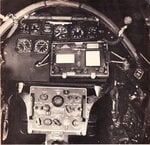MIflyer
Captain
The RO in the F-82 did kind of have his hands full with that radar. But he did have a few basic flight instruments. Also attached is one of my favorite Scale Modeler covers. Exactly what the F-82's shot down that day seems a bit uncertain. They reported the enemy aircraft had an observer to some have asserted it was a Yak-11, as shown, But the Yak-7V fighter also was a two-seater and it probably is more likely it was one of those.


